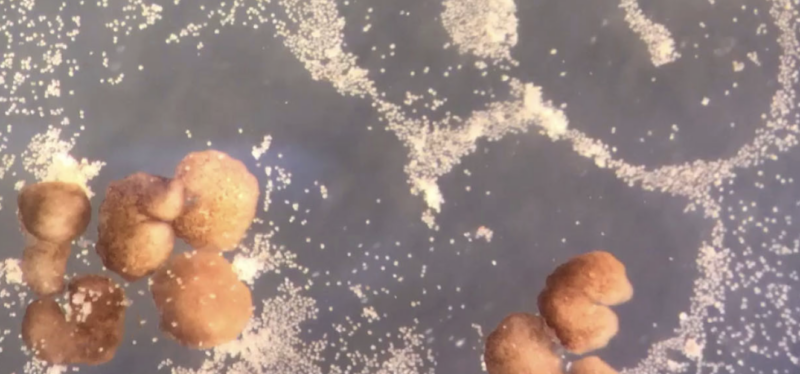
Scientists on Monday announced that they'd optimized a way of getting mobile clusters of cells to organize other cells into smaller clusters that, under the right conditions, could be mobile themselves. The researchers call this process "kinematic self-replication," although that's not entirely right—the copies need help from humans to start moving on their own, are smaller than the originals, and the copying process grinds to a halt after just a couple of cycles.
So, of course, CNN headlined its coverage "World's first living robots can now reproduce."
This is a case when something genuinely interesting is going on, but both the scientists and some of the coverage of the developments are promoting it as far more than it actually is. So, let's take a look at what has really been done.
Mobile balls of cells
The whole process starts by isolating the embryonic cells from a frog's egg. Among the cells' many interesting properties, two are relevant for this work. The first is that these cells stick to each other. If you leave a cluster of them in a culture dish, they'll pull together into a ball. You can even dissociate them entirely and leave a collection of them in culture, and they'll stick together and form a ball of cells that way.
The cells' second relevant feature is that they will self-organize, such that the external cells have thread-like projections called cilia. These spin around in circles, pushing against the surrounding fluid of the culture medium. Over time, neighboring cells coordinate their cilia such that, eventually, the entire ball of cells will end up spinning its cilia in synchrony.
And that's enough to cause the entire ball of cells to start moving—for simplicity, we're going to call these mobile balls of cells, or MBCs. Without obstacles, an MBC will trace out a circular path in the culture dish and keep doing so for up to two weeks before running out of energy. These are the "living robots" of the CNN title. They're also not new; the same research team described them in a paper back in March.
What's new is that the researchers placed a collection of dissociated cells in the dish with the MBCs. And, as the MBCs spun around in circles, they created a cluster of cells at the center of the circle they traced (think of the path of the mobile ball of cells as a donut—the cells form a pile in the donut's hole). And, because these loose cells naturally self-adhere, a new cluster would start to form from them.
On their own, the new clusters were too small to do anything much. But the researchers could pull them out of this dish and place them in a new one with a dense supply of additional cells. The small clusters would grow by incorporating some of these additional cells and eventually reach the point where they, too, would be mobile.
Too mini-me
The problem with this process is that it's inefficient. The second generation of MBCs was smaller than the first and traced a smaller circle. At most, you could go two generations of progeny MBCs before the whole process stalled out. So, these are not especially accurate or efficient replicators.
The new work looked at ways to optimize this by altering the shape of the original MBCs. But surgically modifying an MBC is challenging work, and then it needs a few weeks in contamination-prone culture dishes to see how it behaves. Being inherently lazy, the researchers decided to model their behavior using computers, implementing an evolutionary algorithm that created variations of shapes that were then tested for their ability to herd cells using a physics simulator.
(Unfortunately, a researcher involved in the work who is in the Department of Computer Science told CNN that this combination of algorithm and modeling is an AI. If scientists want the public to understand what they're doing better, it would help if they actually gave the public accurate information.)
Since the most effective replication starts by piling up a large amount of cells, the algorithm essentially found forms of MBCs that did so most effectively. The solution the model came up with turned out to be a half-toroid.
Creating these required the researchers to perform surgery on MBCs, cutting out a notch on one side of the ball after it was squashed flat into a disk, and then unflattening it. But the results were impressive: some of the crescent-shaped MBCs could produce progeny that could go for an additional three generations before the process failed. But again, this wasn't exactly self-replication, since the ensuing generations wouldn't assume a crescent shape without surgical intervention.
reader comments
65